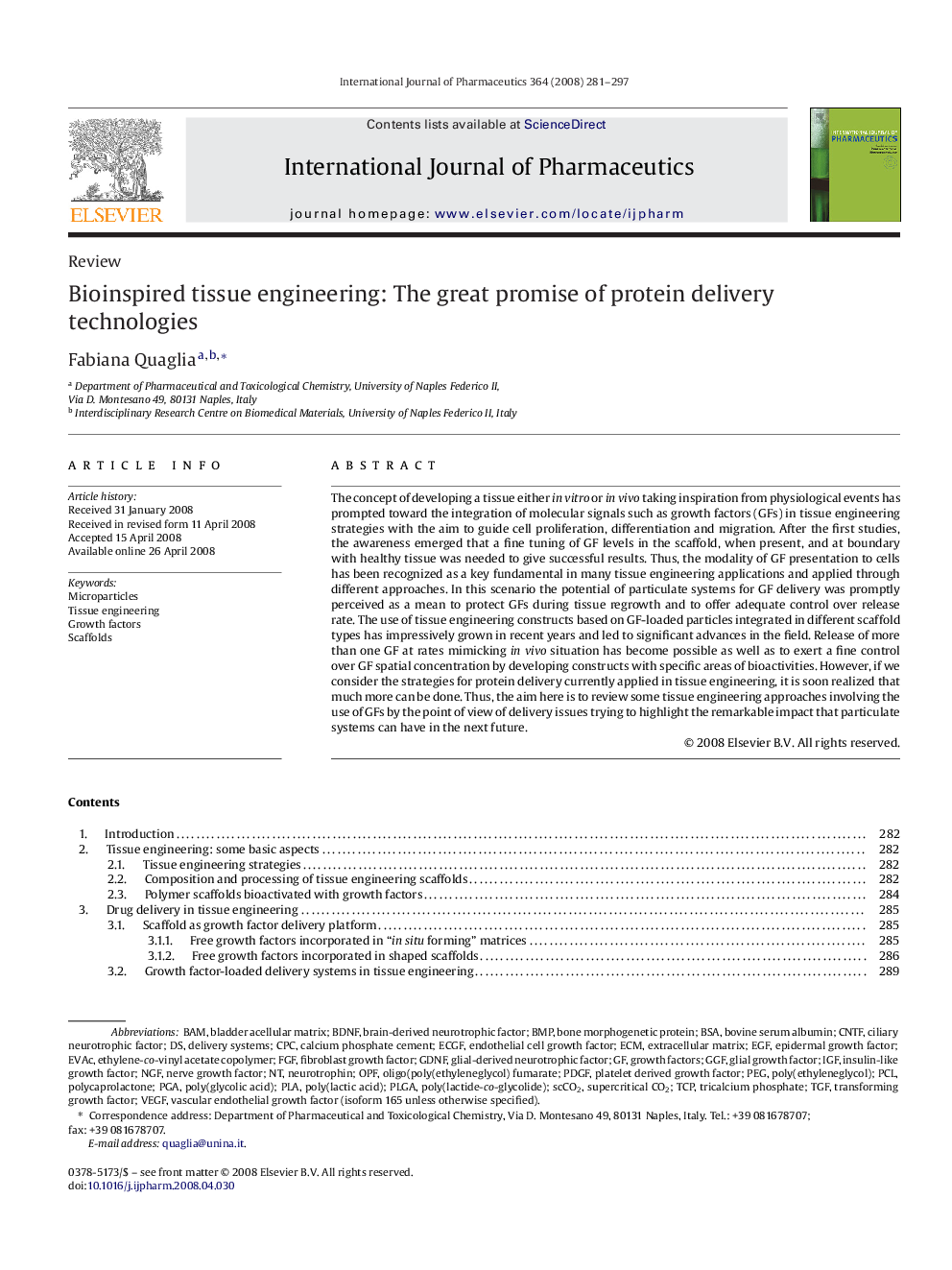| Article ID | Journal | Published Year | Pages | File Type |
|---|---|---|---|---|
| 2505277 | International Journal of Pharmaceutics | 2008 | 17 Pages |
The concept of developing a tissue either in vitro or in vivo taking inspiration from physiological events has prompted toward the integration of molecular signals such as growth factors (GFs) in tissue engineering strategies with the aim to guide cell proliferation, differentiation and migration. After the first studies, the awareness emerged that a fine tuning of GF levels in the scaffold, when present, and at boundary with healthy tissue was needed to give successful results. Thus, the modality of GF presentation to cells has been recognized as a key fundamental in many tissue engineering applications and applied through different approaches. In this scenario the potential of particulate systems for GF delivery was promptly perceived as a mean to protect GFs during tissue regrowth and to offer adequate control over release rate. The use of tissue engineering constructs based on GF-loaded particles integrated in different scaffold types has impressively grown in recent years and led to significant advances in the field. Release of more than one GF at rates mimicking in vivo situation has become possible as well as to exert a fine control over GF spatial concentration by developing constructs with specific areas of bioactivities. However, if we consider the strategies for protein delivery currently applied in tissue engineering, it is soon realized that much more can be done. Thus, the aim here is to review some tissue engineering approaches involving the use of GFs by the point of view of delivery issues trying to highlight the remarkable impact that particulate systems can have in the next future.
